Philippe Charles Jacquet: The Better Maestro of Solitude
My shortlist of depicters of solitude includes names of the magnitudes of Edward Hopper and of Giorgio de Chirico; but here’s a French contemporary painter that makes me relate to his Universe more than I thought, even if I’m not accustomed to Brittany’s (Bretagne) coast, which might have inspired him.
Born in 1957 in Paris, Philippe Charles Jacquet was trained as an architect at the École Nationale Supérieure des Arts Décoratifs, later to become a self-taught painter. Since 2004, he took part in about 40 solo and group exhibitions in France and the United States. Some online places where you can find images of his paintings:
- His official site
- The Hugo Fine Arts Galerie (NYC)
- The M Fine Arts Galerie (Boston)
- Galerie 26 (Paris)
- Artsy (56 works), an art aggregator
- 1stDibs (online marketplace, they even sell NFTs)
The last one has the page for Philippe Charles Jacquet broken, and the search is broken too (WTF?!), but some of his paintings that once were for sale can still be accessed by the ids 1104393, 1728933, 4280152, 4280202, 4280292, 4280322, 4280332, 4280382, 4293241, 4293331, 4293351, 4293451, 4293481, 4934541, 6694112.
I have identified somewhere around 180 distinct paintings; it’s difficult to count them exactly, as I saved different images of the same painting, from different sites (sometimes I found three large images of the same painting). Beyond 1stDibs and sometimes Hugo Galerie, the largest images can be found on Artsy, if you know to capture the zoomable image and to find the unscaled original.
Say you watch this Autoportrait. Once you click on the image to zoom it, it will bring you portions of it, zoomed in, such as:
https://d7hftxdivxxvm.cloudfront.net/?resize_to=fit&width=800&height=800&quality=80&src=https%3A%2F%2Fd32dm0rphc51dk.cloudfront.net%2Fd_8Fmwh7qSk2sOc2c7dpCw%2Fnormalized.jpg
Well, the original image is the one at the end (you replace %3A by : and %2F by /):
https://d32dm0rphc51dk.cloudfront.net/d_8Fmwh7qSk2sOc2c7dpCw/normalized.jpg
This isn’t the largest image they host; I’ve found even 4203×2826 pixels, 4195×2804, and the like.
Prolific as he is, Philippe Charles Jacquet can be confusing at times. The official site lists some paintings that have the same name numbered, e.g. Grande marée 1, Grande marée 2, Une soirée ordinaire 1, Une soirée ordinaire 2, Le peintre 1, Le peintre 2, Le peintre 3, etc. There are however paintings with identical name that are not clearly distinguished (four different L’attente, for an example), and then there are pictures with similar names, such as:
- Le reclus vs Les reclus
- Rive vs Rives
- Les confinés vs Les deux confinés
- Dans l’attente vs L’attente 1…4
What’s more interesting is when Philippe Charles Jacquet partially reuses patterns from older paintings to create similar variations that don’t have their value diminished in any way by this approach; after all, there is a limited number of basic elements in his paintings, almost like in a game of LEGO. For someone who tries to evoke the feelings triggered by a specific kind of non-urban solitude, I find the method rather inspired.
Some funny similarities and differences follow, up to a point.
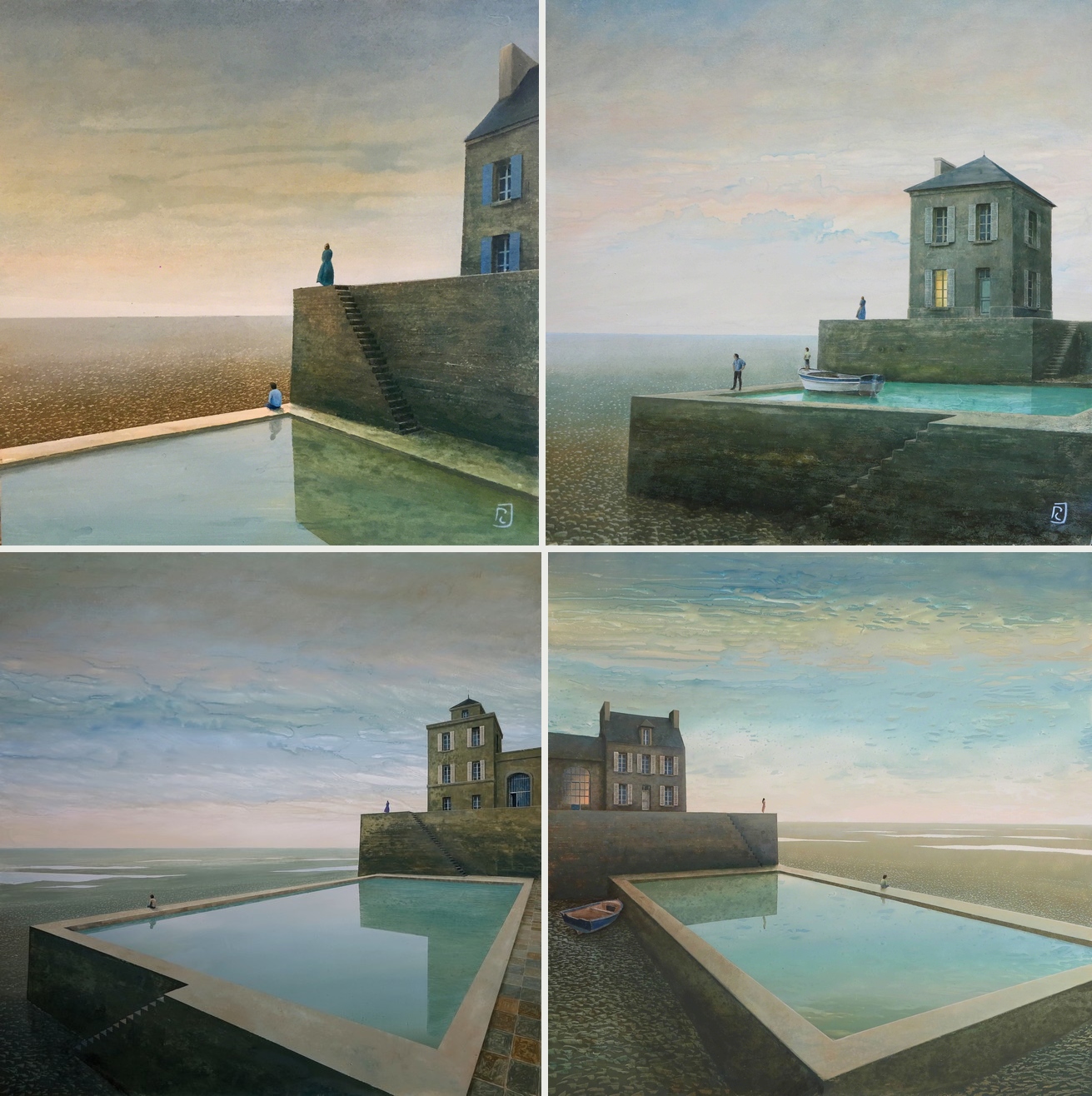
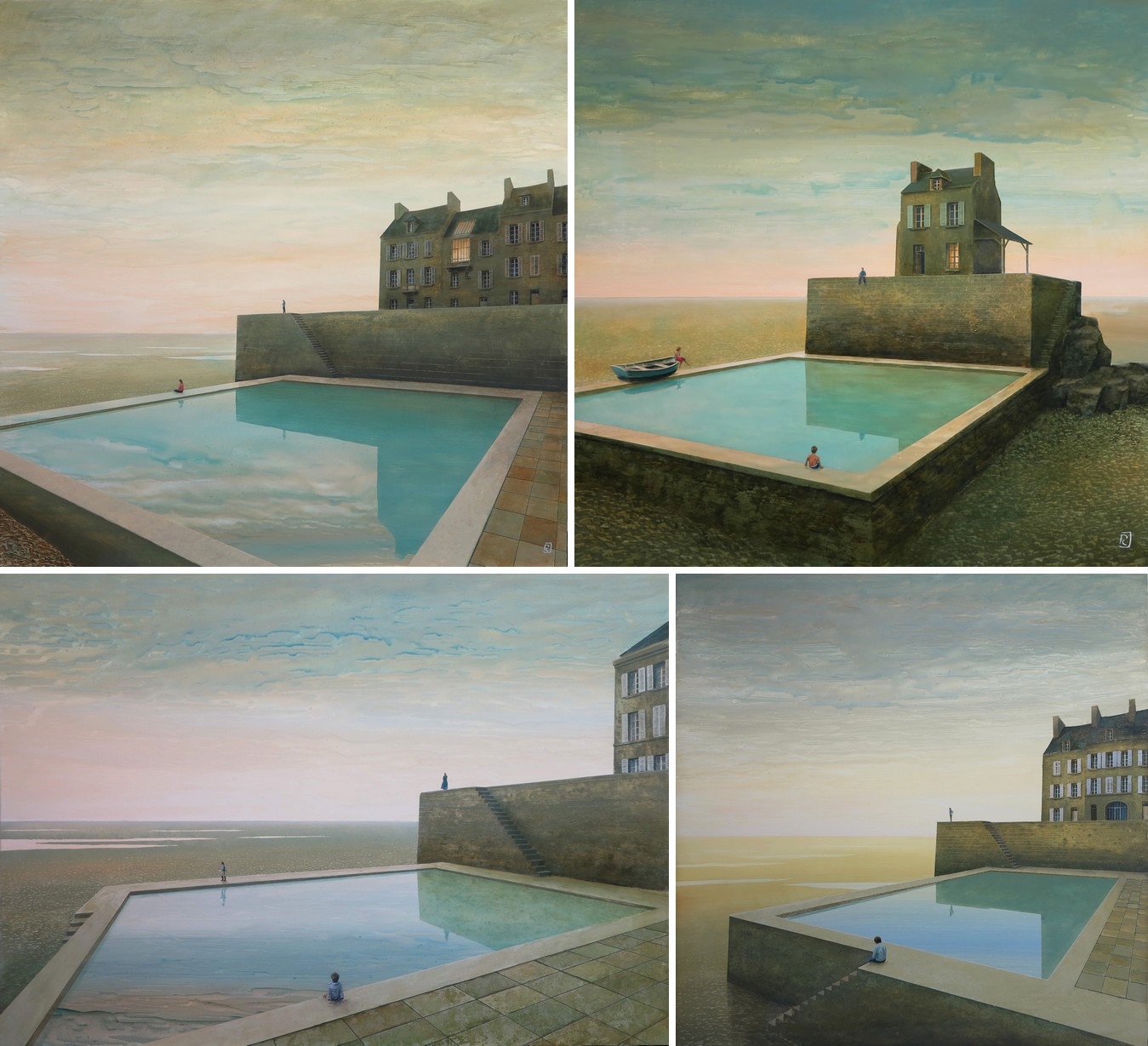
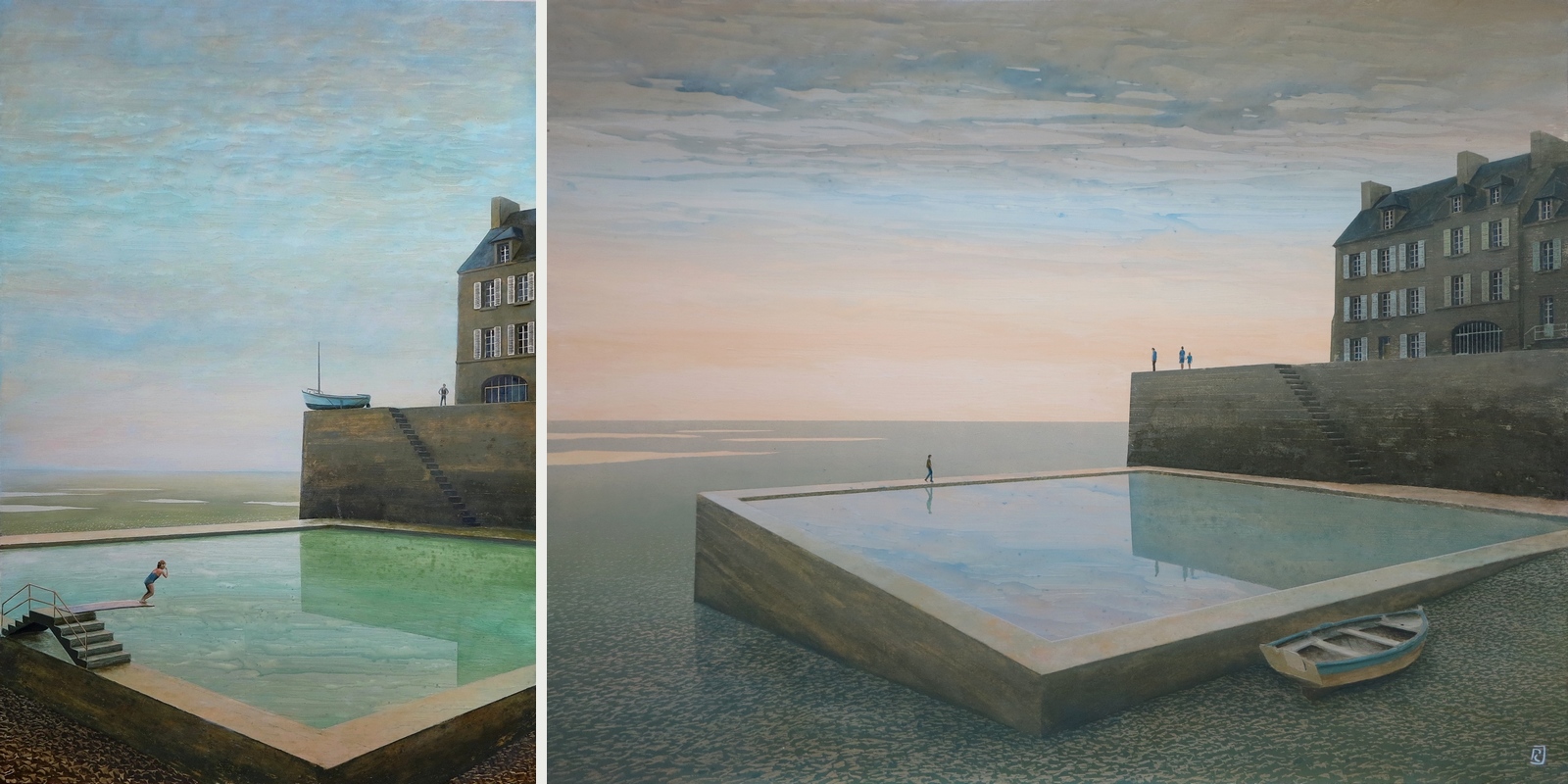

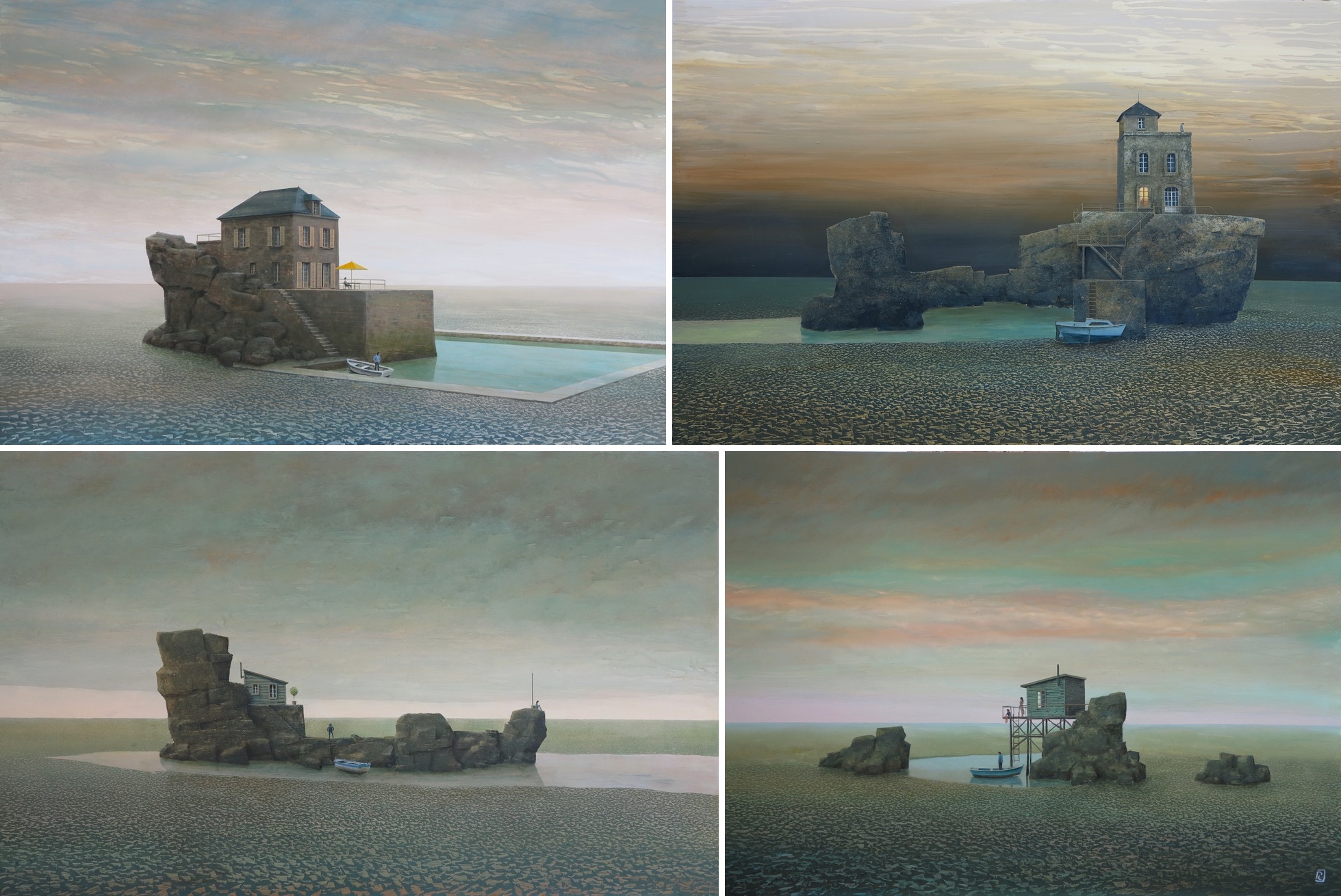
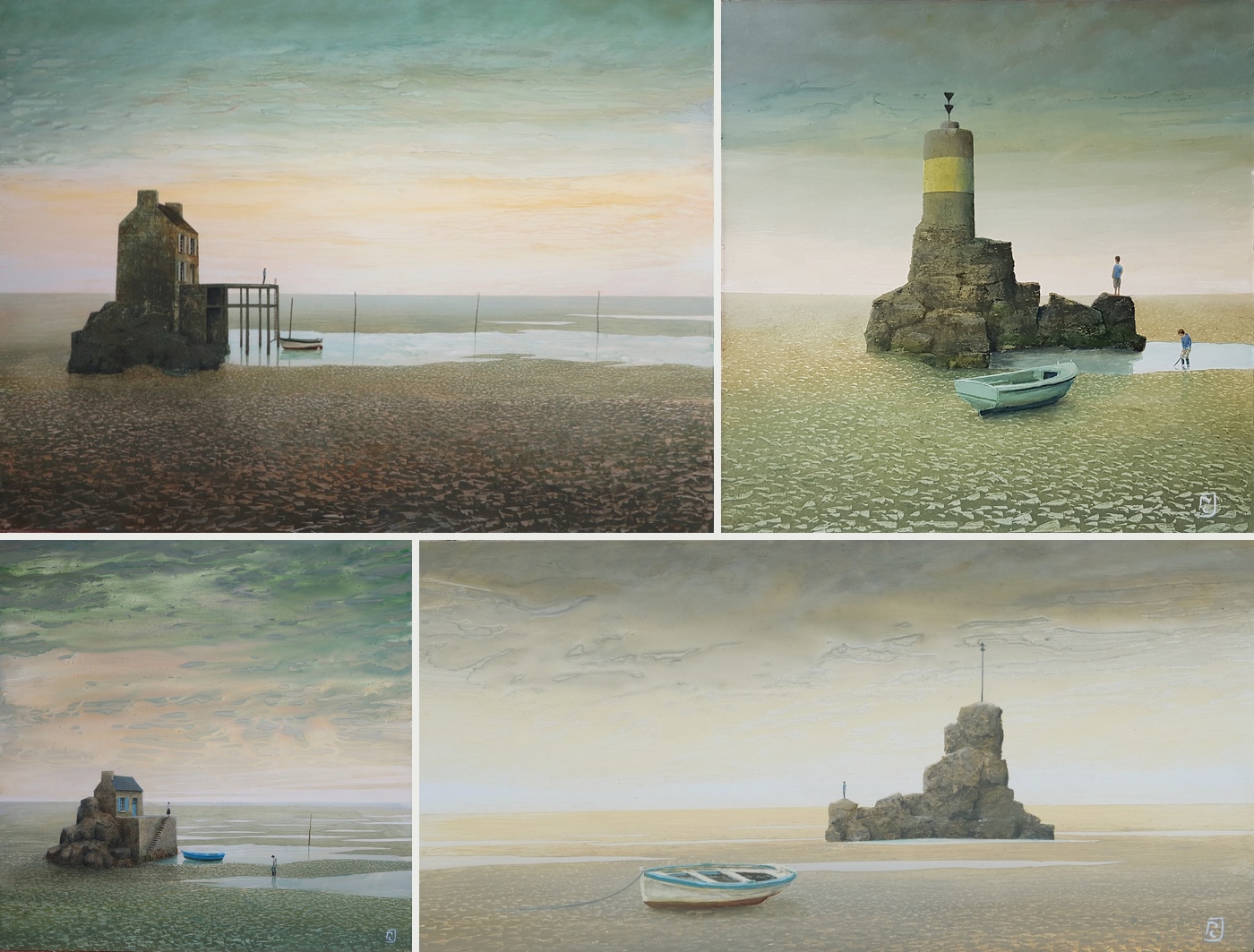
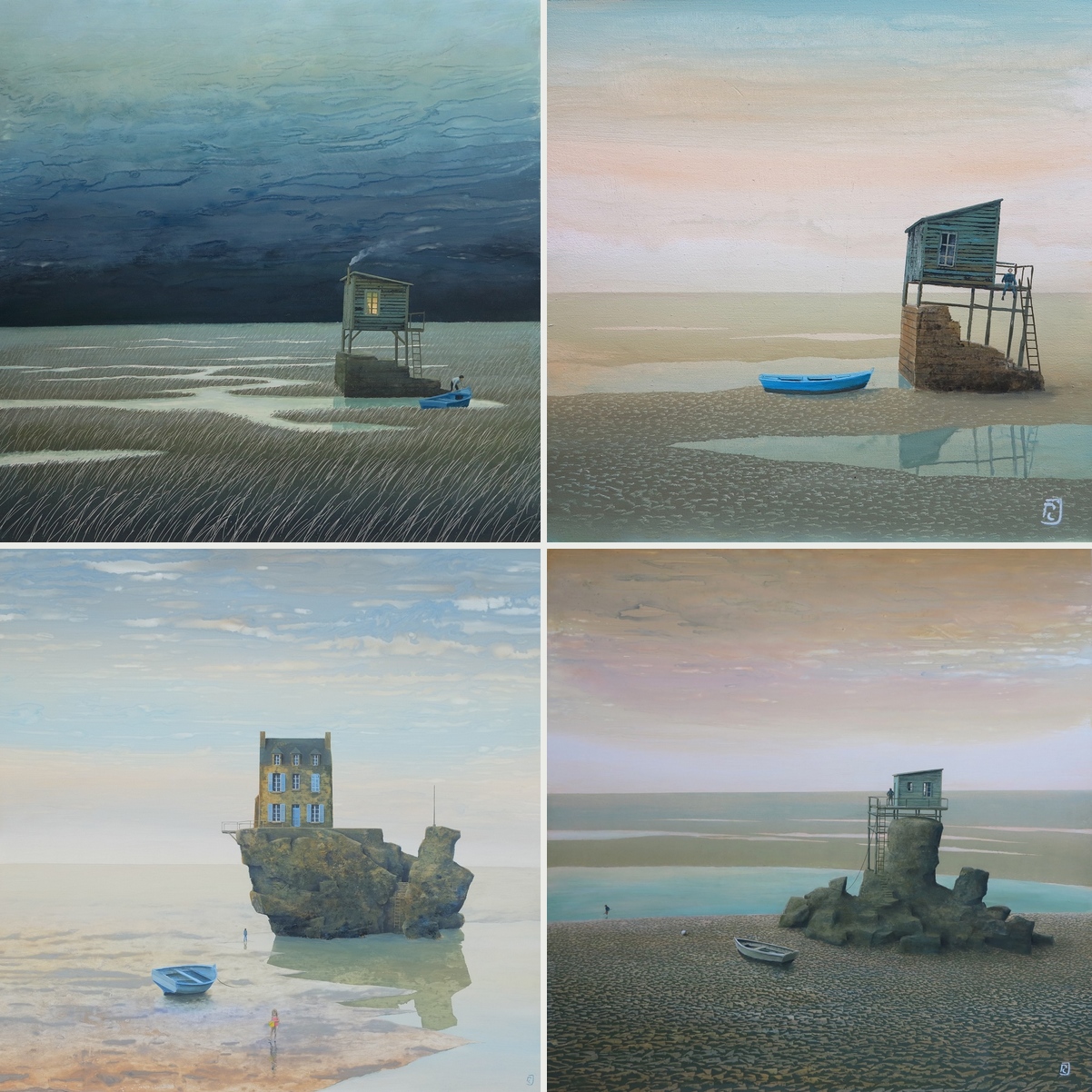
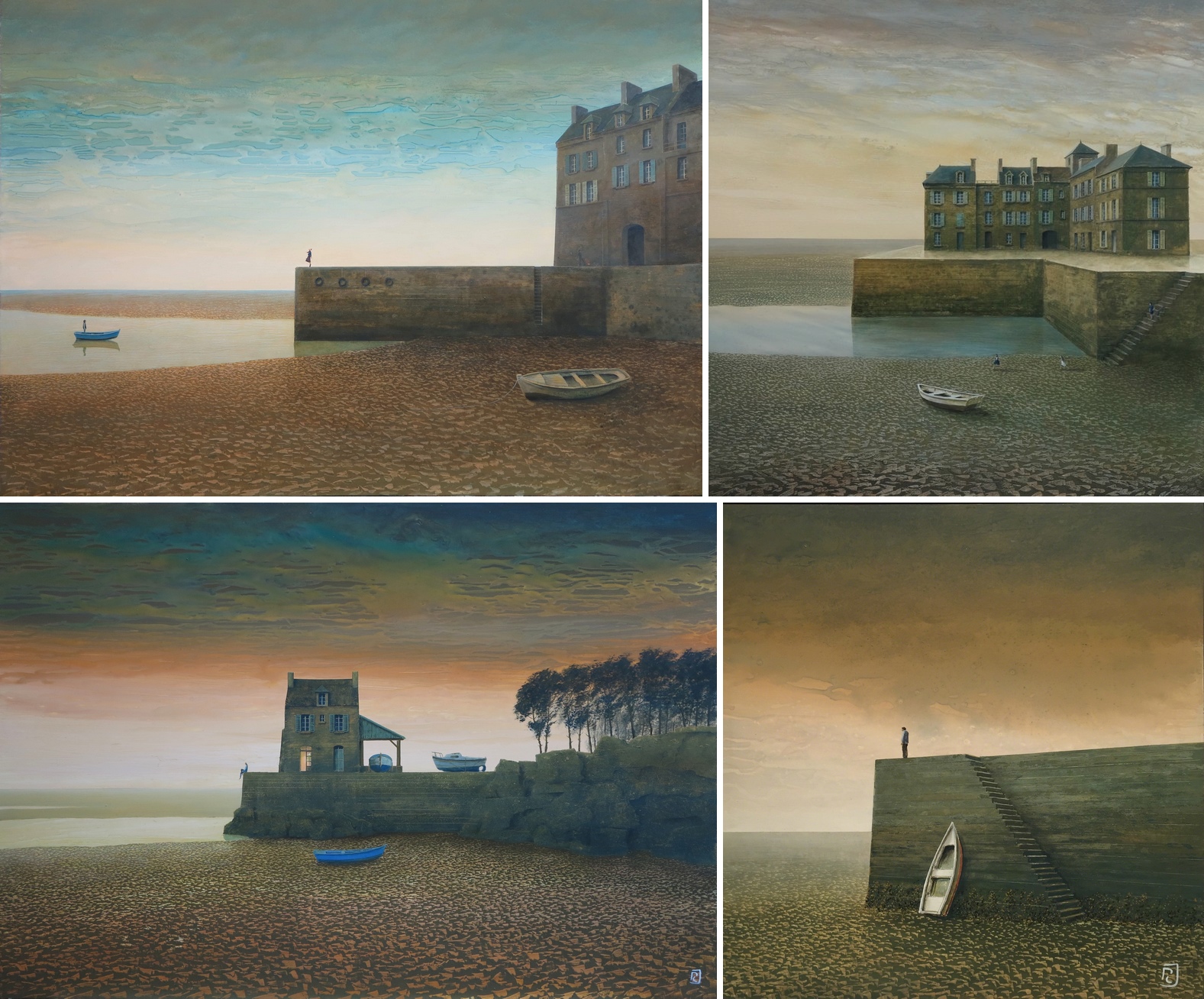
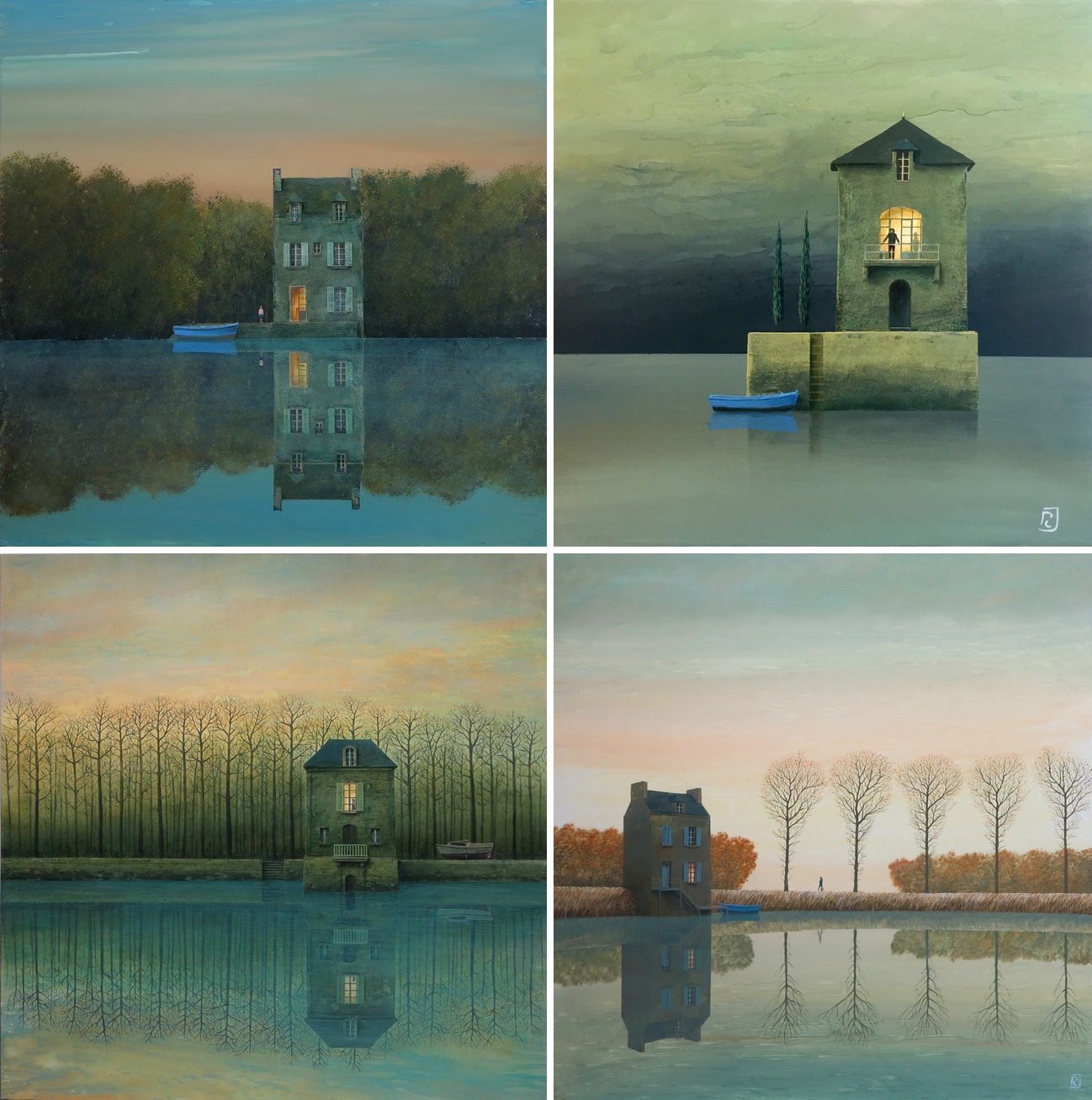
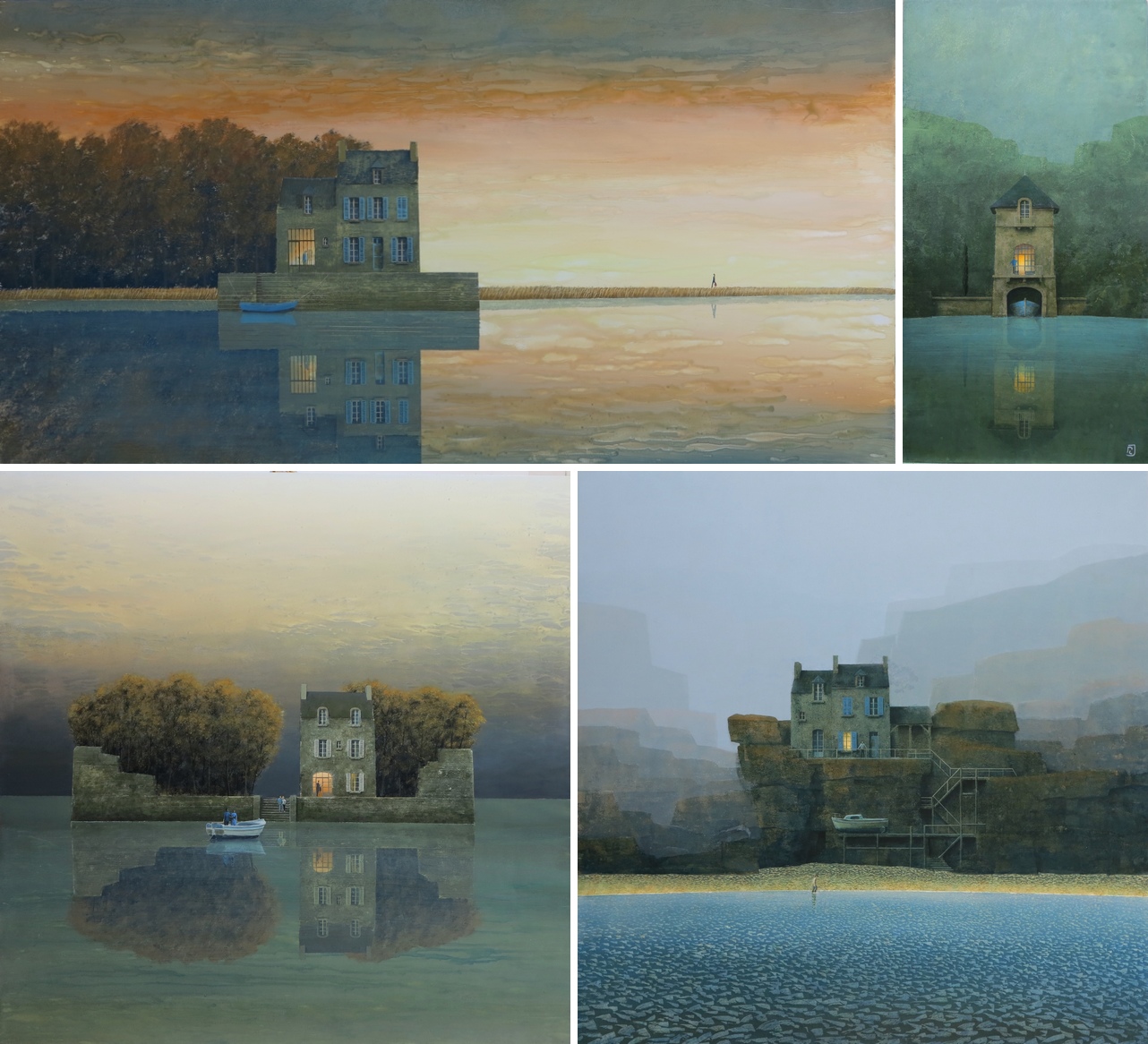
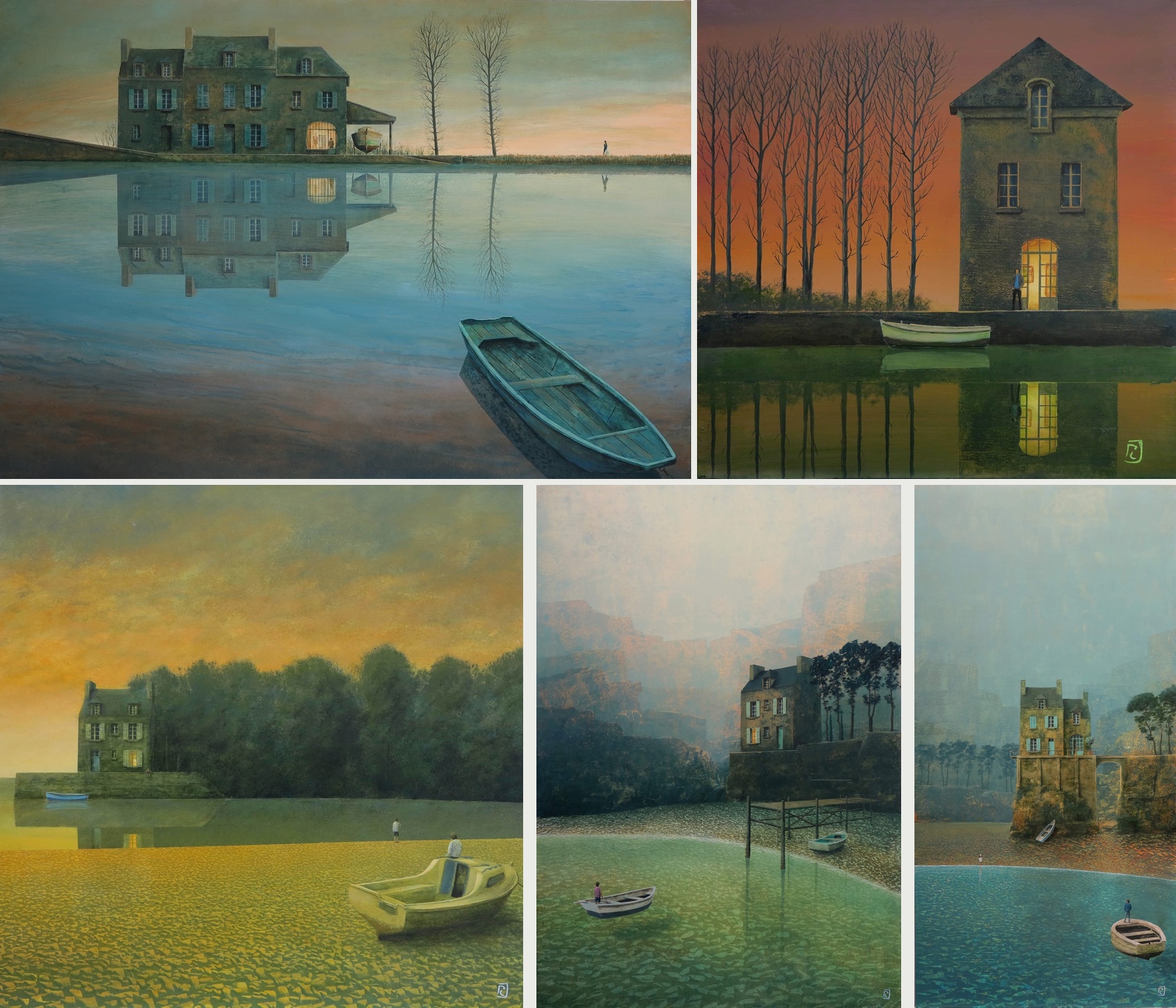
Despite Philippe Charles Jacquet painting mostly in oil on wood, this doesn’t mean his works lack details; quite the contrary, his stroke is rather fine for oil paintings!



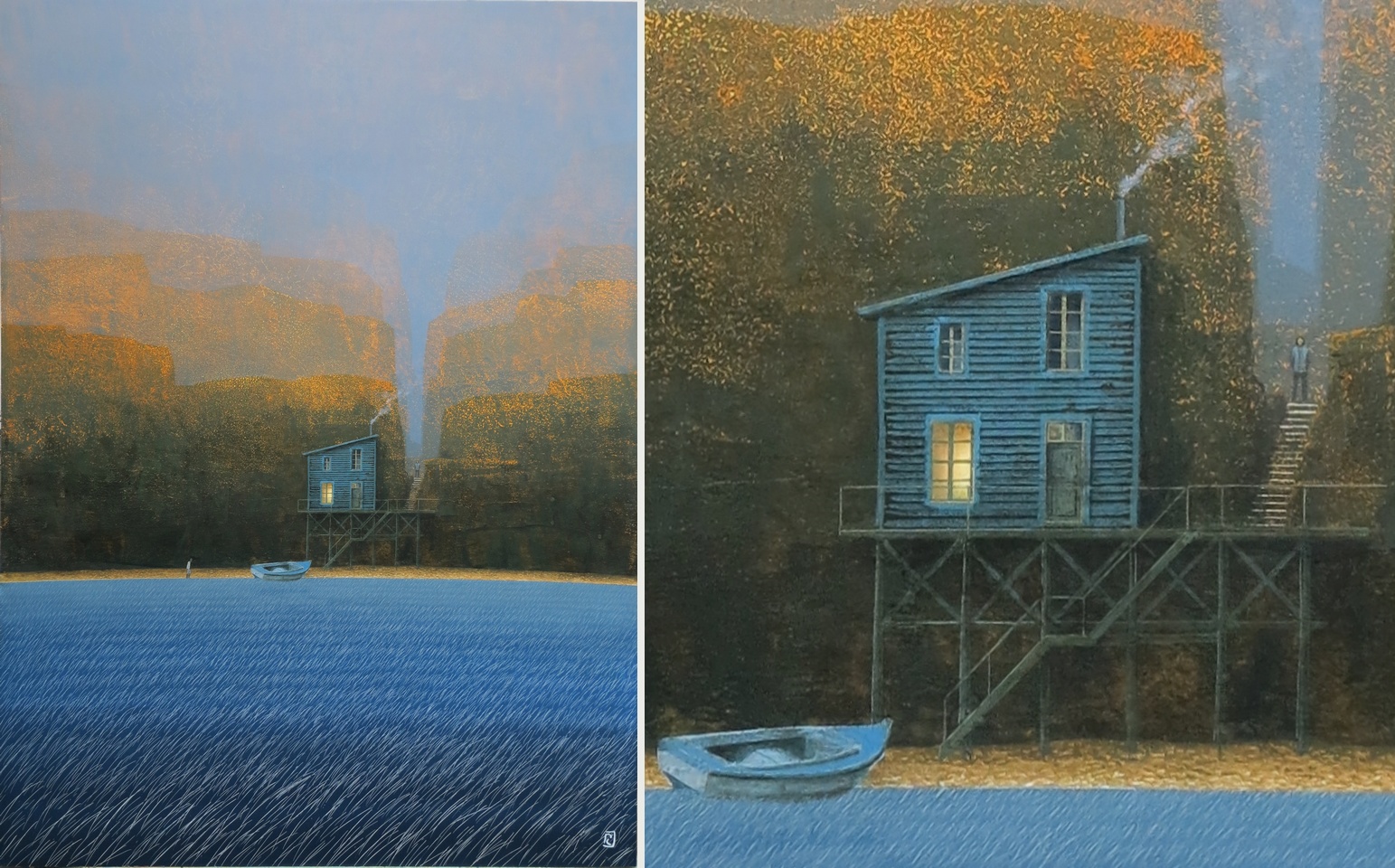
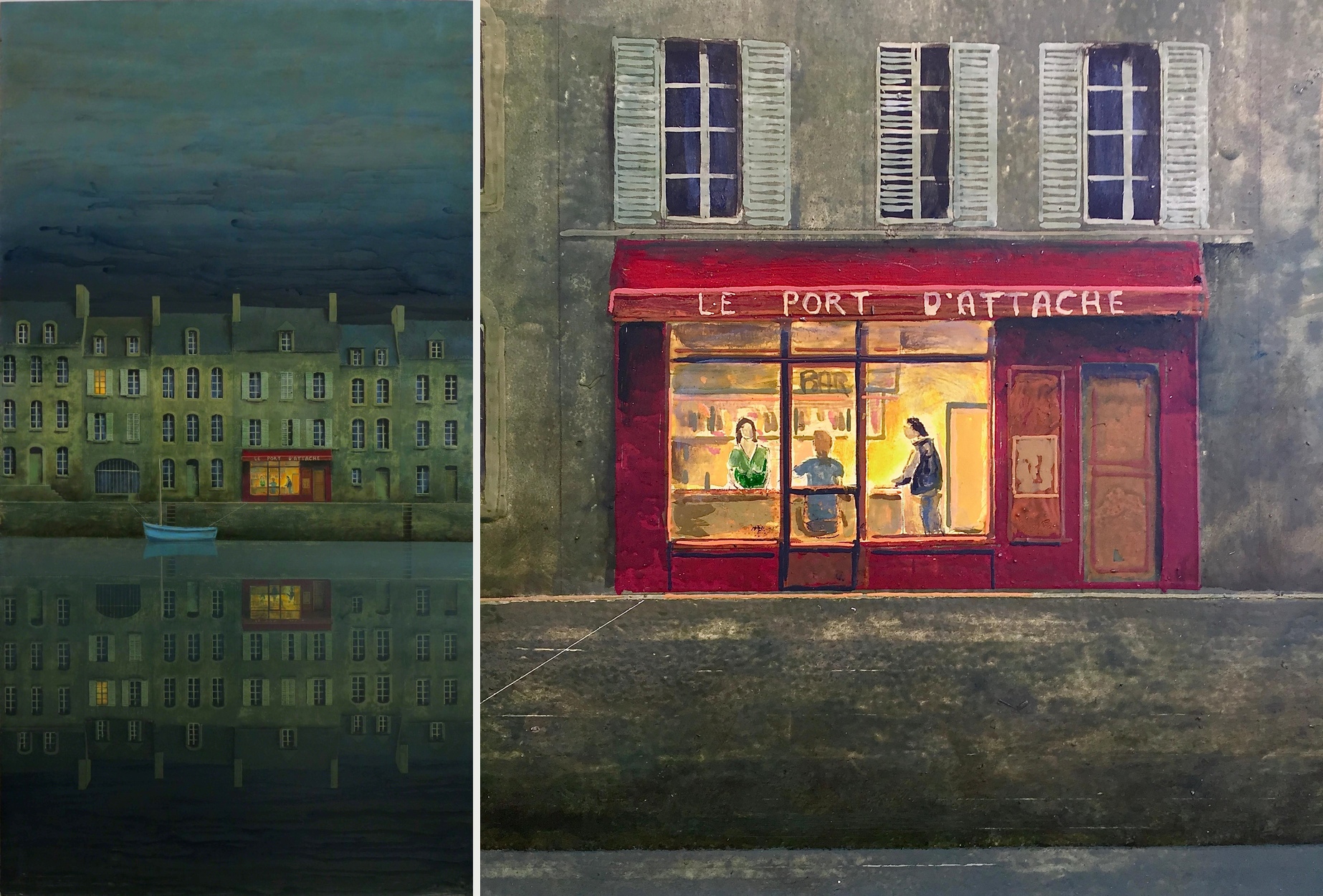
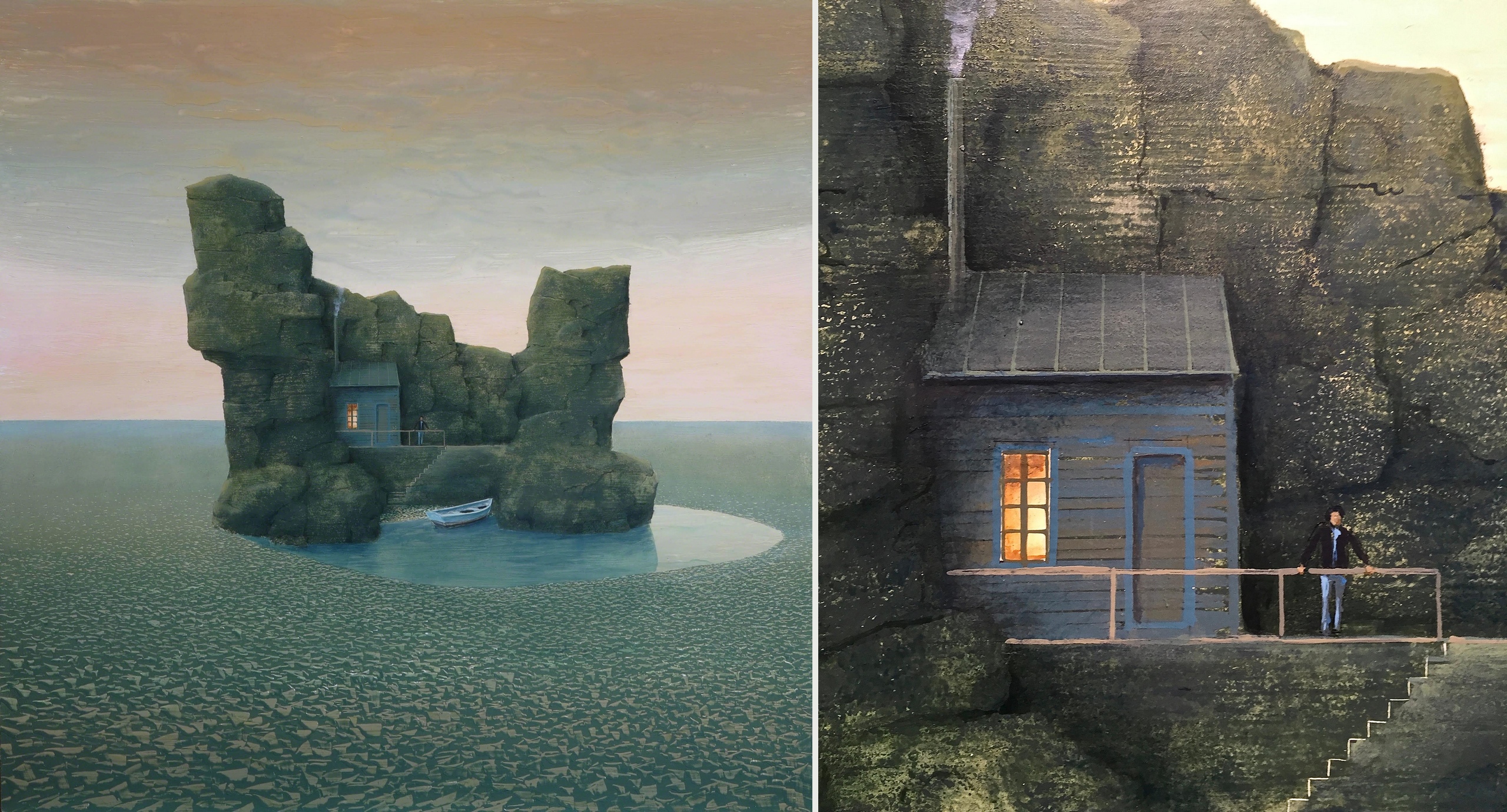
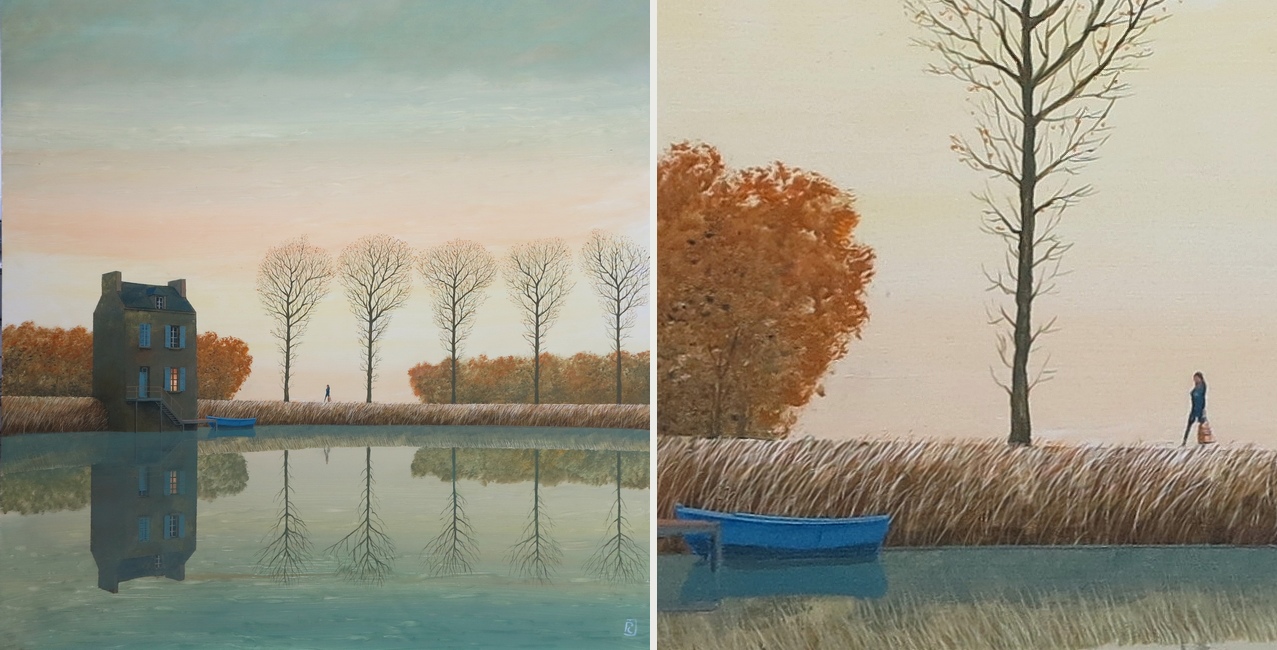
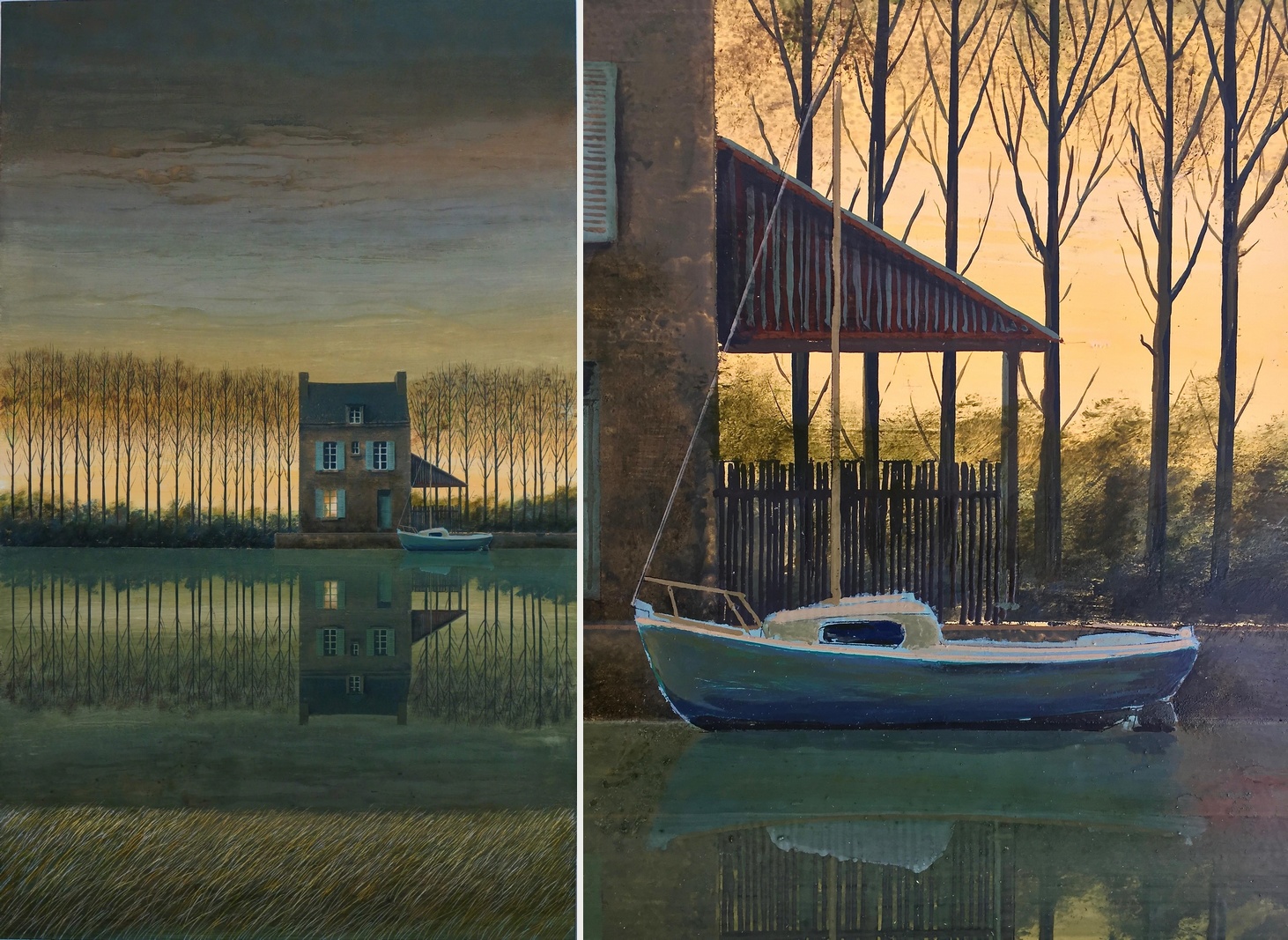
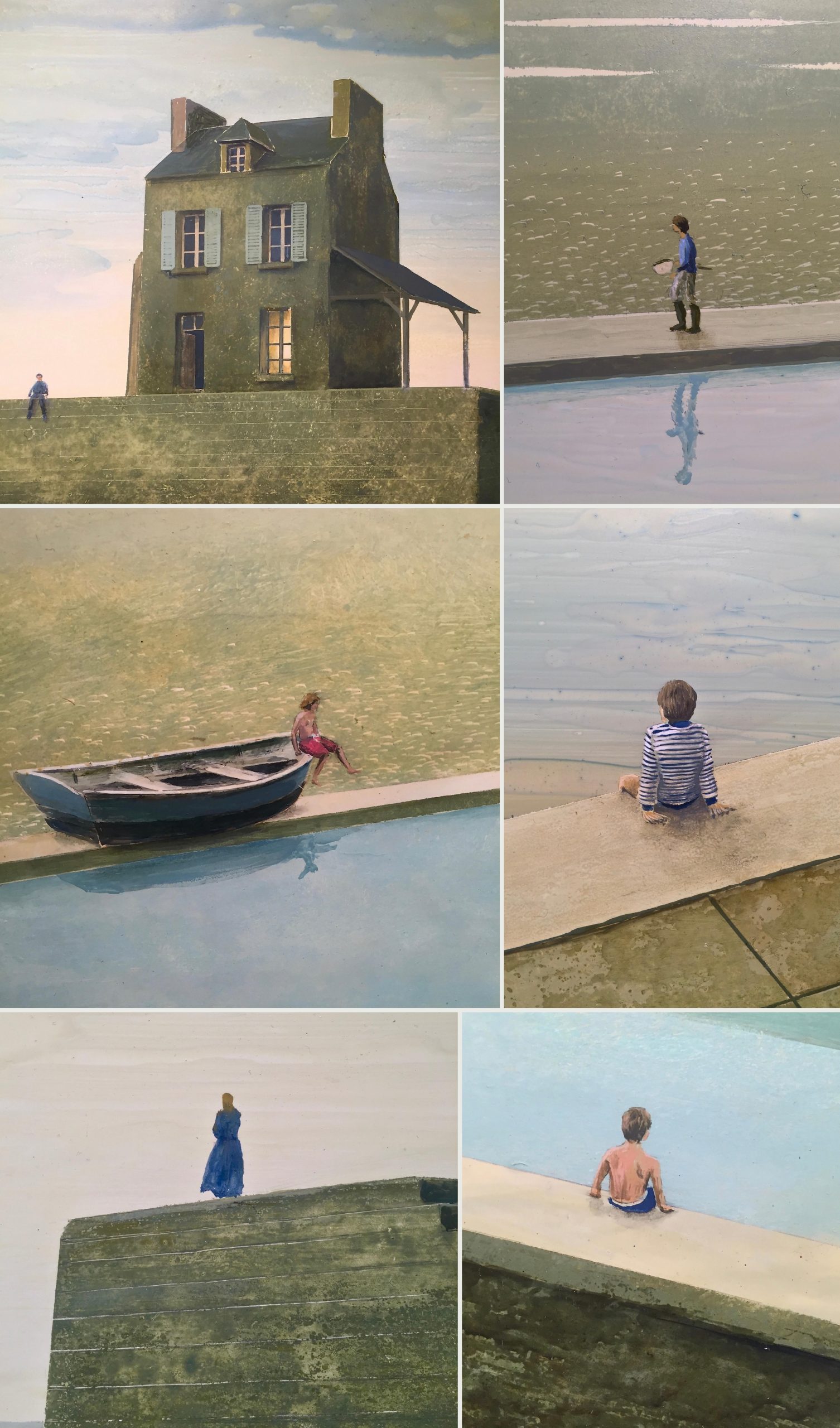
In a future life, when I grow up, I’ll become a painter. Unless, in a metaverse, I could also become an architect and, pourquoi pas, un dessinateur de BD !
P. S.
Giorgio de Chirico, whose overabundant works are still under cataloguing and authentication by the Fondazione Giorgio e Isa de Chirico, because fakes show up less infrequently than you’d think, not only has made thousands of works (of which at least 600 paintings), but oftentimes he plagiarized himself by remaking the same painting a couple of years or a couple of decades later!
Only two examples. Il trovatore, 1917 vs. 1954-1956 (both in private collections, as most of his works):
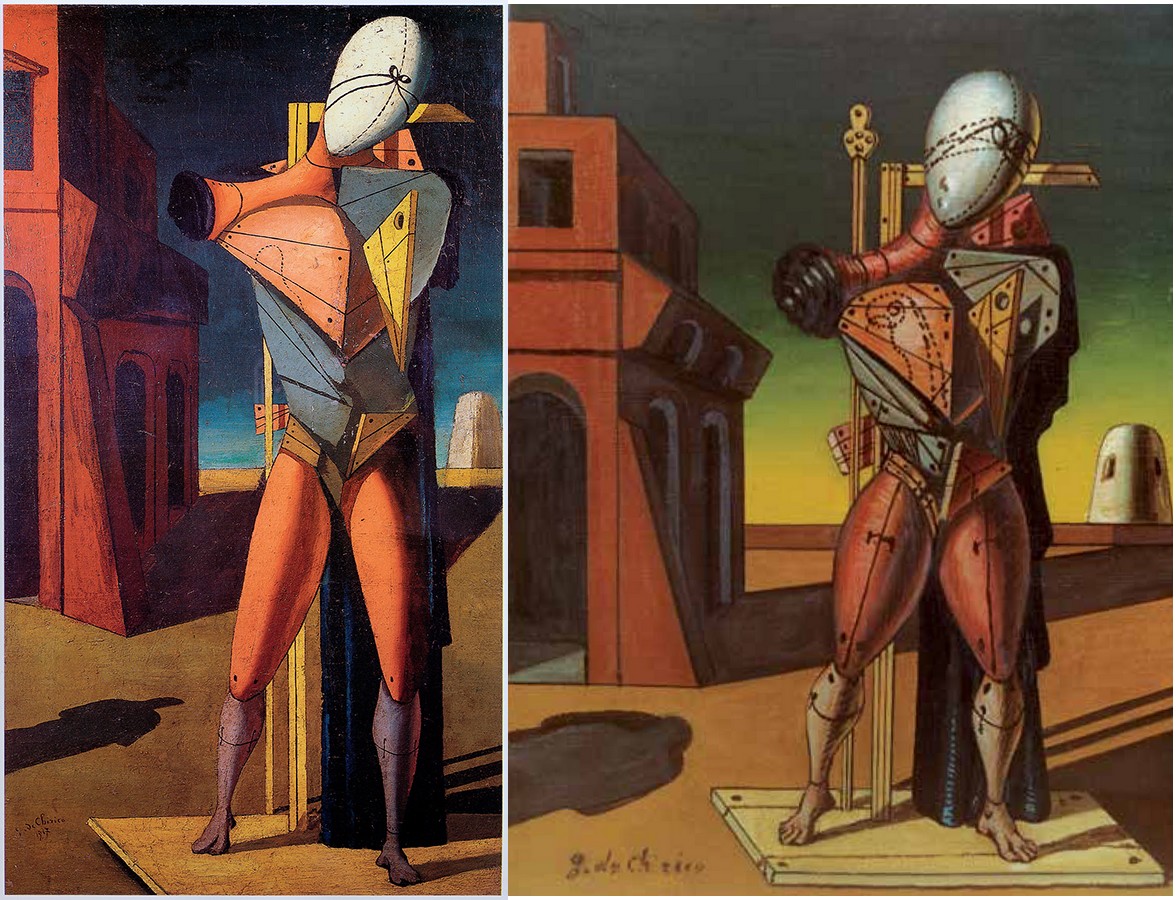
Interno metafisico con grande officina, 1916, Staatsgalerie, Stuttgart, vs. Interno metafisico con officine, 1958-1959, private collection:
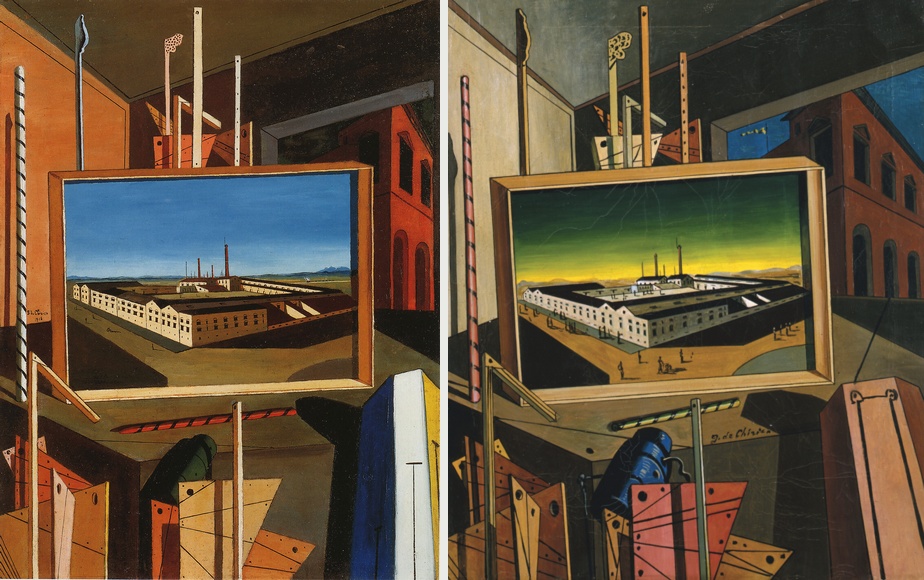
But Giorgio de Chirico was a sort of metaphysical surrealist, and there is more to his work than the uninitiated can understand. I’d recommend two fabulous books: Riccardo Dottori, Giorgio de Chirico. Immagini metafisiche; and Fabio Benzi, Giorgio de Chirico. La vita e l’opera.
As I mentioned Edward Hopper in the chapeau (lede), I’ll use him as a pretext to voice a complaint: when on the Internet one finds the photo of the same painting in yellow tones, but also in violet tones, which one is more accurately representing the reality of the physical work?
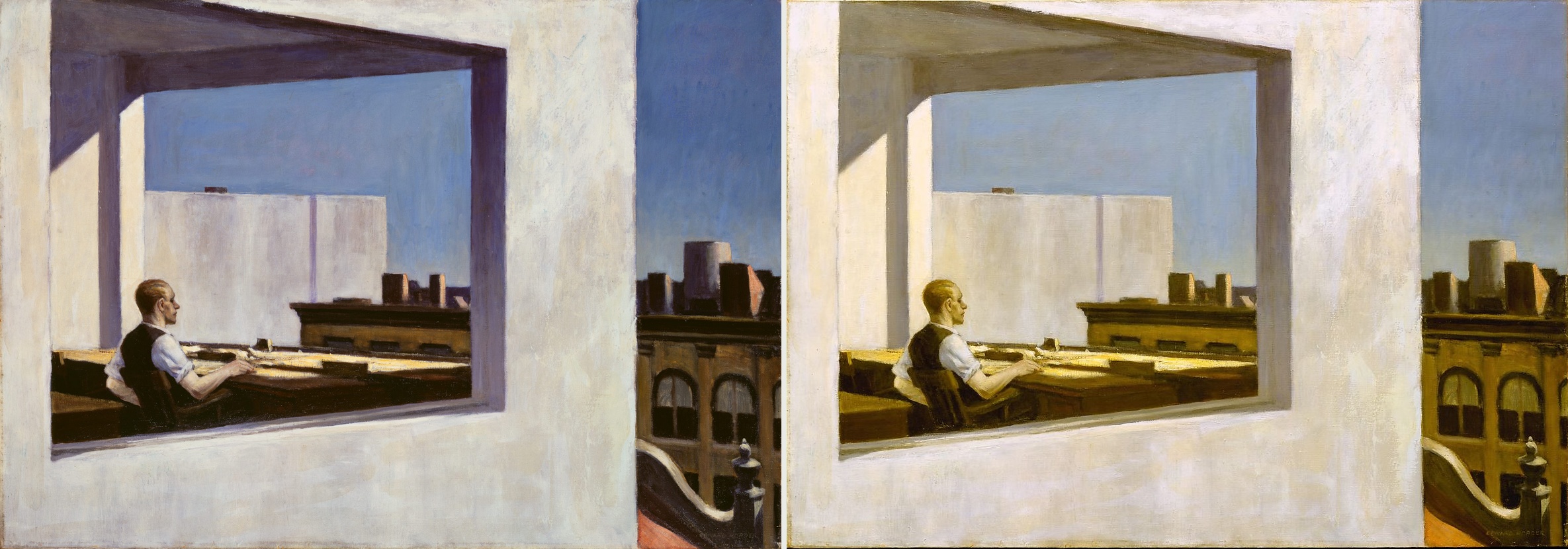

Leave a Reply